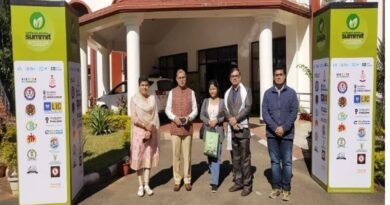Ancestors of most of the Indians were there during Ramayana age: Study
The genetic ancestry of India population shows amalgamation of mainly two different kinds of ancestries—the tribes and Indus valley habitat.
Prayagraj Mar 29: At a time when efforts are on for the construction of Ram temple in Ayodhya, a study conducted by experts from five prominent institutes, led by Prof Gyaneshwer Chaubey from the department of zoology (molecular anthropology) at Banaras Hindu University (BHU), shows that most of the country’s population has been living here since the times of Ramayana.
The genetic ancestry of India population shows amalgamation of mainly two different kinds of ancestries—the tribes and Indus valley habitat. The findings have been published in the recent issue of ‘Nature’ research journal (March 27, 2020).
“Each one of us, barring around 20% people who are found in parts of western India and Haryana and have their ancestry with the Aryans, bear genetic sequencing with one of the three tribes of the country – Kol, Bhil and Gond (which are here for about 60,000 years) – or that with Indus Valley people who were here some 5000 years ago,” Prof Chaubey said.
The events mentioned in the epic of Ramayana is said to take place some 7000 years back and as the text mentions these tribes, this means that they were very much present during and well before that period, argued Prof Chaubey.
The study, which began in 2013, had the sample size of over 550 Kol and equal number of Gond and Bhil tribes from three parts of the country – Koraon (Prayagraj in Uttar Pradesh), Siddhi (Madhya Pradesh) and Amravati (Maharashtra).
The team selected three main tribal populations, namely Kol (Guh Nishad), Bhil (Bhilni) and Gond (from Gondwana areas), and extracted references to these tribes from different chapters of Ramayana, along with their geographic locations.
The team collected samples from various locations and scanned hundreds of thousands of single nucleotide polymorphisms (DNA sequencing) among these three ancient tribes, and compared the results with their neighboring populations and other world populations.
Prof George van Driem, a linguistic expert and head of linguistic department from University of Bern, Switzerland, said: “We didn’t find any genetic link of Kol with other Austroasiatic speaking population, ruling out their link with the populations of the East—as claimed by some studies which say that these tribes were part of those who came from southeast Asian countries in last 4,000 years. Hence, they are the most primitive population of the country.”
“Our analysis shows that these tribes, including Kol, forms the foundation of present population of the country living here before the Ramayana period. It is not surprising that they find their mention in the epic,” said Prof Chaubey.
Interestingly, Kols claim themselves to be descendants of Shabri, a character in the Ramayana, and call her the ‘Mother of all Kols’.
“They also believe that once they inhabited the hills of Rajasthan with Bhil tribe and helped Rajput king Rana Pratap in battle against Mughals,” said Prof Chaubey.
Apart from Prof Chaubey and his PhD students from BHU, others who contributed in the study include Rakesh Tamang from Calcutta University (known for his work on Himalayan populations), Akhilesh Chaubey from Madhya Pradesh (an expert in tribal culture and their lifestyle), Dr Pankaj Srivastava (forensic expert from CSFL, Sagar) and Prof George van Driem from Switzerland.
Source: TNN




